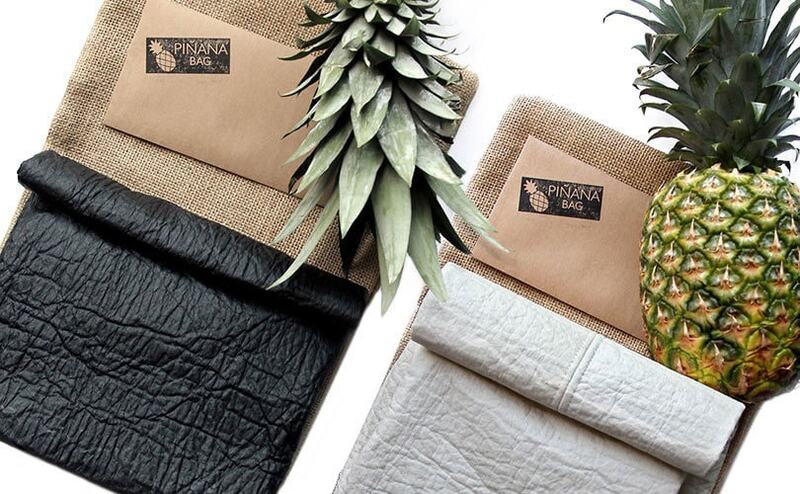over 6 years ago

The fashion industry is one of the largest polluting industries in the world. Did you know, the average t-shirt travels over 40,000 km before landing in your wardrobe? Moreover, it also takes more than seven full bathtubs of water to make one cotton t-shirt.
Also, what many don’t know is that two-thirds of the environmental footprint of our garments happen after it has been purchased, and not actually during its production as most people think.
More and more people are now aware of this situation and are trying to resolve this environmental issue. As an answer, sustainable textiles are emerging and soon will fill up our wardrobes.
So far we can describe two fabrics category: Natural and synthetic.
Natural fabrics are as its name suggests fabrics that are naturally-derived; made of animal or plant-based fibres. The most common natural structures are cotton, wool, silk, hemp and linen. These fibres break down quickly and are therefore compostable.
Synthetic fabrics are human-made and produced synthetically – the resulting form does not exist naturally anywhere. The most common synthetic fabrics are polyester, nylon, spandex and acrylic.
Bananas, coffee, pineapple, lotus, stinging nettles and hemp - what sounds like the ingredients on an exotic shopping list are all natural resources that can be turned into sustainable textiles.
Aiming at diminishing resources, primarily through resource-intensive natural fibres like cotton and the environmental impact of petroleum-based fibres like acrylic, polyester, nylon and spandex.
It is about time for the fashion industry to look for sustainable alternatives and you to be aware of other options you can find.
1. Hemp fibres
One of the most versatile natural fibres can be obtained from hemp - hemp fibres, which are antibacterial, durable and resilient, and work as a natural air-conditioning system. Besides, hemp is a fast-growing plant that consumes very little water and does not require herbicides, pesticides, synthetic fertilisers or GMO seeds.
If you are wondering why is hemp not so popular, the answer is the other use you can make of that same plant.
The connection with the Cannabis plant and recreational drugs is still stopping brands. Therefore the cultivation has been severely hampered, especially in the western world.
The situation is different in China, where the industrial use of the cannabis plant was never prohibited. Consequently, China currently accounts for more than 50 per cent of the global hemp production and holds more than half of the more than 600 international patents on hemp fibres and textile production.
2. Stinging nettle fibres
The common stinging nettle, Urtica dioica, is a widely used plant that is easy to grow. For the production of the threads, the nettles are collected in the summer and the stalks dried well which eliminates the sting. After drying, the stems are broken to separate the wooden parts. Then, the plant is hackled to separate the fibres and to remove the leaf attachments. After that, the filaments are spun wet and then dried.
Similar to hemp fibres, stinging nettle fibres are versatile, keep you warm in winter and cool in summer, and can be grown with far less water and pesticides than cotton. Thanks to new spinning techniques and hybrid plant species, nettle plants with super high fibre content are obtained, which are durable and flexible and have a good spinning length. Unlike hemp, there is no legal problem with the cultivation of nettles, which has made the plant a viable and legitimate market fruit.
3. Coffee ground fibres
Most coffee drinkers throw away coffee ground after making their coffee. However, it is an essential raw material that can be used to make coffee ground fibres. Taiwanese textile company, Singtex’s technology, combines the post-patented processed coffee ground with a polymer to create master batches before spinning it into yarn. The resulting coffee yarn is multi-functional and can be used in a variety of products, from outdoor and sports performance wear to household items used every day.
Fabrics made out of coffee ground fibres like S.Café by Singtex showed excellent natural anti-odour qualities, in addition to UV ray protection and quick drying time. The coffee grounds used to create the yarn are taken and recycled from some of the world’s largest coffee vendors, like Starbucks. In this way, the company gives a second life to coffee grounds which would have otherwise ended up in the trash.
4. Pineapple fabric Piñatex
Although the idea may sound unbelievable, there is a vegan alternative to leather, which is made of pineapple leaves. London-based Ananas Anam has developed a natural and non-woven textile out of pineapple leaves, known as Piñatex which is remarkably similar to leather. The revolutionary pineapple fabric is made from pineapple leaf fibres. During a process called decortication, the textures are extracted from the leaves. The threads then undergo an industrial process to become a nonwoven textile, which is the base of Piñatex. A by-product derived from the manufacturing process is biomass, which is converted into organic fertiliser or biogas and used by the farming communities, thereby closing the loop of the material's production.
Piñatex is the result of years of work and the search for an alternative to leather; a new type of natural tissue, which is 100 per cent vegan and sustainable. Besides, it is also a strong, yet versatile, breathable, soft and flexible, material which can be easily printed on, stitched and cut, making it suitable for some fashion products. It has also won many awards. The next big step is to popularise Piñatex further and to continue developing and stabilising its supply chain to meet the growing demand for its pineapple leaf, in a way that does not compromise its mission and fundamental values concerning environmental, ethical, social and economic sustainability.
5. Banana fibres
Banana fibre is one of the world’s strongest natural threads. It is made from the stem of the banana tree and is incredibly durable and biodegradable. The fibre consists of thick-walled cell tissue, bonded together by natural gums and is mainly composed of cellulose, hemicelluloses and lignin. Banana fibre is similar to natural bamboo fibre, but its spin ability, fineness and tensile strength are said to be better. Banana fibre can be used to make many different textiles with different weights and thicknesses, based on what part of the banana stem the thread was extracted from.
Similar to coffee ground fibres and pineapple leaves, the material cycle is closed when producing banana fibres as they are made from waster products: from recycled banana stems, which the farmers would throw away otherwise. Banana fibres can be used to make ropes, mats, woven fabrics as well as handmade papers. Green Banana Paper, a company, based on the island of Kosrae in Micronesia, is using banana fibre to make vegan wallets, purses, beads and paper. However, extracting the banana fibre from the banana stems is not an easy, or simple, process but a labour-intensive one. Banana yarn or cloth is made by boiling strips of the sheath in an alkaline solution to soften and separate them. Once this is done, the fibres are joined together to create long threads which are then spun wet, to prevent them from breaking. Afterwards, the yarns can be dyed or weaved.
6. Lotus fibres
Using lotus fabrics and textiles may sound exotic to western ears, but in countries like Thailand and Myanmar, for example, lotus fibres have been used for unique garments for centuries. Not surprisingly because the manufacturing process produces a luxurious fabric that feels like a mixture of silk and raw linen that is also stain-resistant, lightweight, soft, silky and extremely breathable. However, it is a complicated and lengthy manufacturing process.
After collecting the lotus stems, they are cut open at the end to extract the long, thin fibres. This must be done within three days of harvesting to achieve optimal results. The fibres thus obtained are washed and hung to dry before hand-woven on traditional looms.

